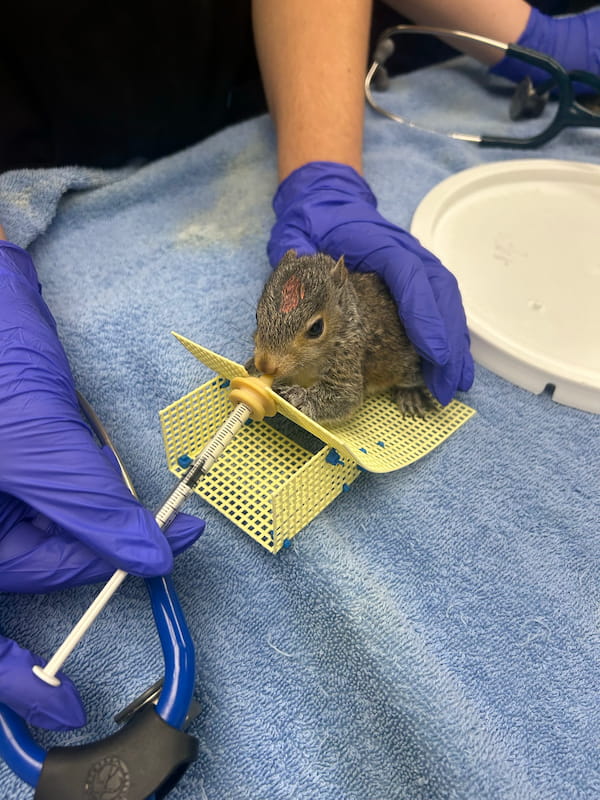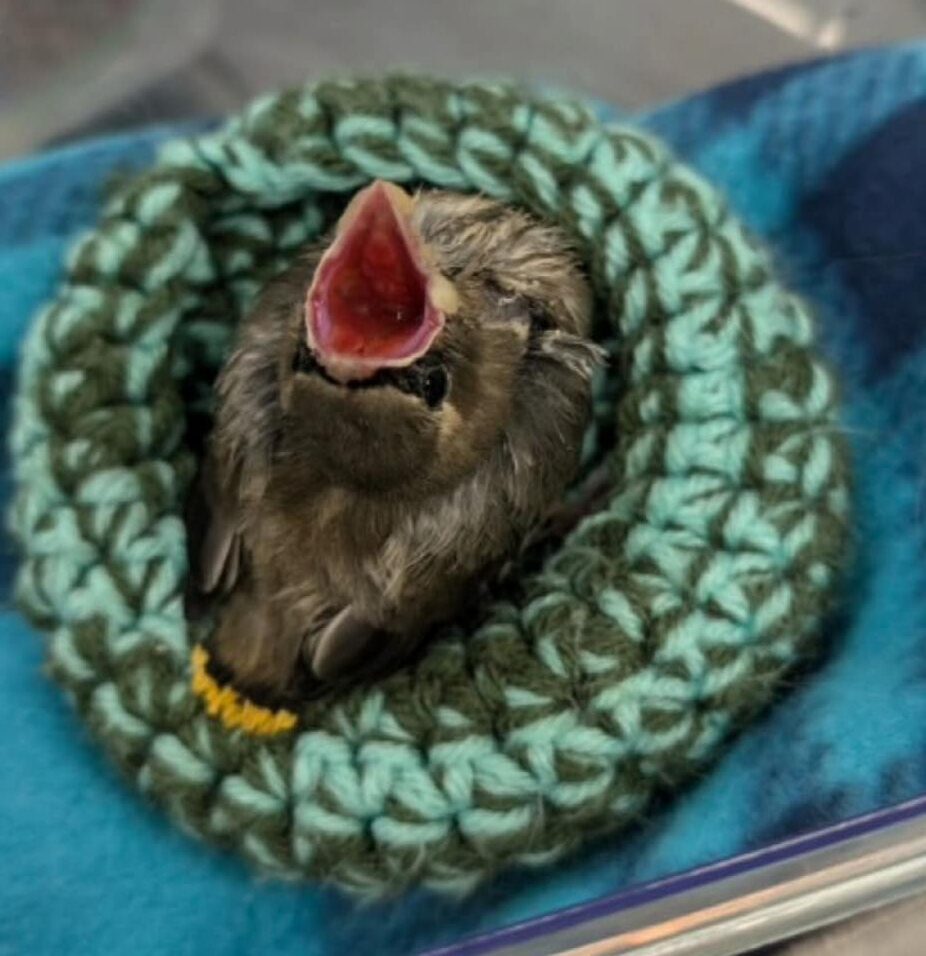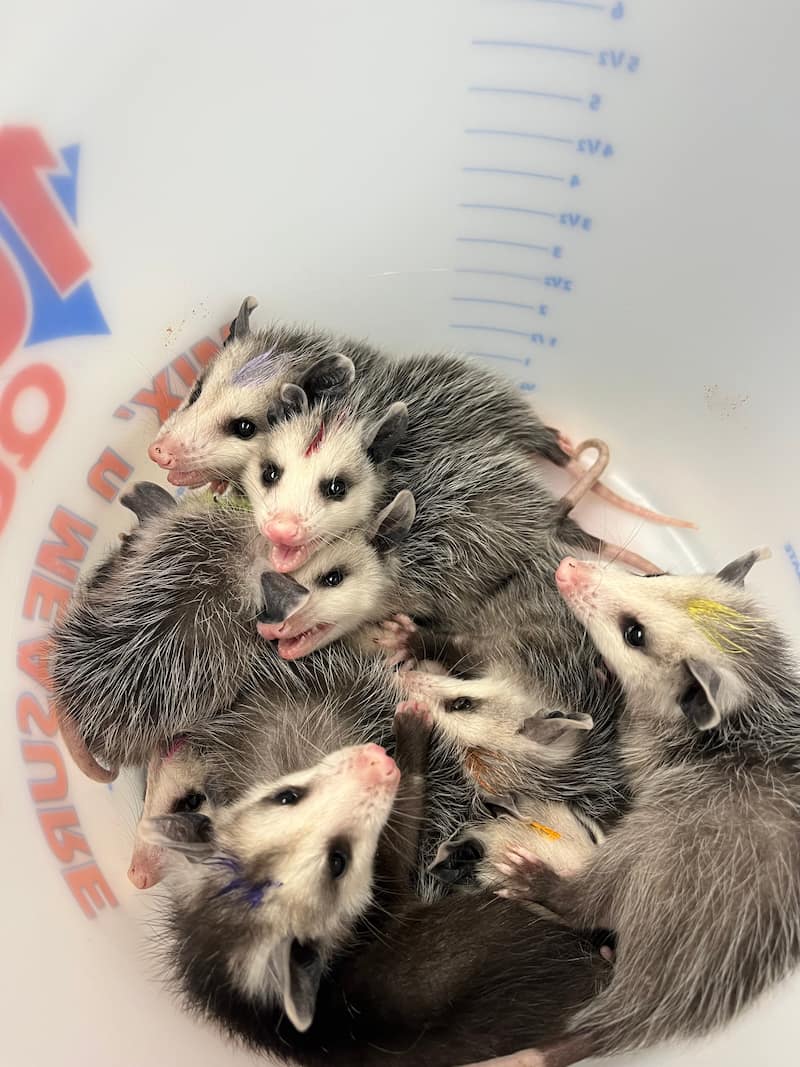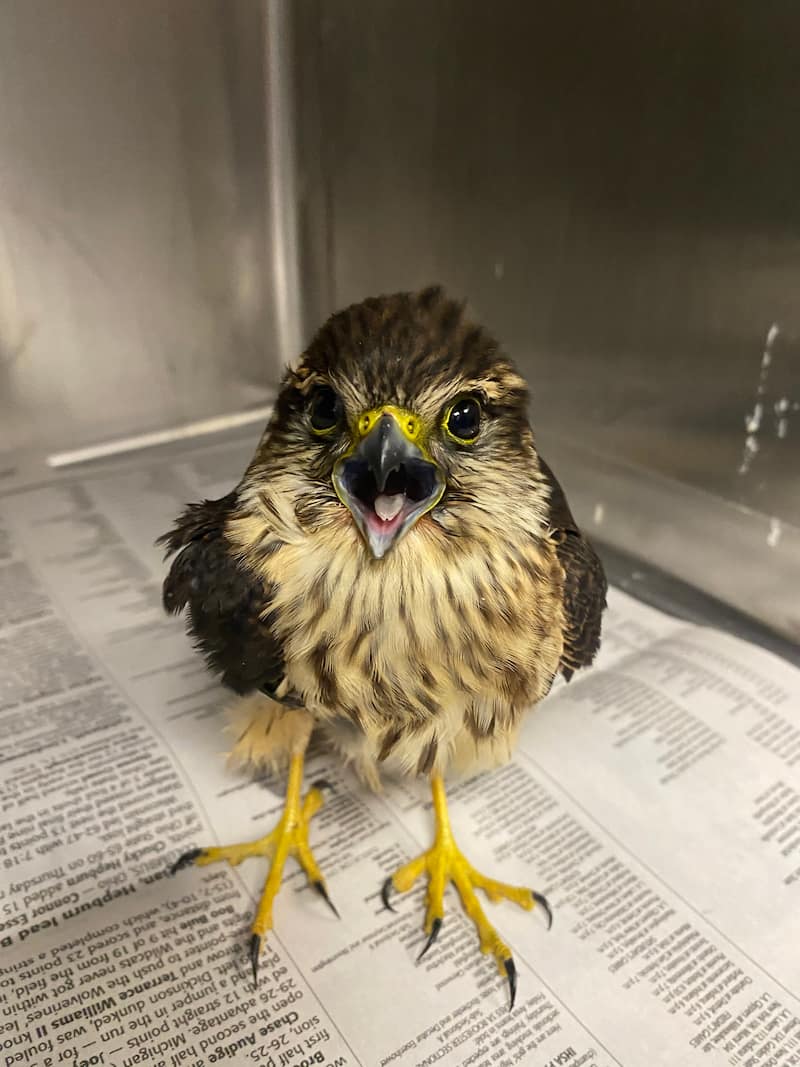Sometimes it can be difficult to know when an animal should be taken to the Wildlife Medical Clinic. In cases where there are signs of an overt injury with blood present, unwillingness to move when approached, exposed bone, and maggots, we highly recommend safely transporting the animal to us! However, not all cases are as clear as that. Below I have outlined some very common questions the Wildlife Medical Clinic receives and what we think is the best course of action.
“Help! There is a bird in my yard on the ground and it hasn’t moved. It also seems to be wobbly when it walks. Should I bring it in?”
This is a super common question that we receive phone calls about a lot during the summer months. In these situations, it is very important to consider how old the bird in question may be. If the bird is an adult and fully feathered, it is uncommon to find them in that state. There is also a concern if the bird has no feathers and is looking dull and unresponsive. In these situations, it would be appropriate to give the WMC a call prior to capturing them. However, if the bird is smaller and lacking full plumage, then this may be a fledgling bird that is learning how to fly. Most songbirds will spend 3-5 days on the ground during this time. It is common to find fledgling birds near the bases of trees below their nest while they are learning to navigate the world.
“I found a tiny bunny on the sidewalk, what should I do?”
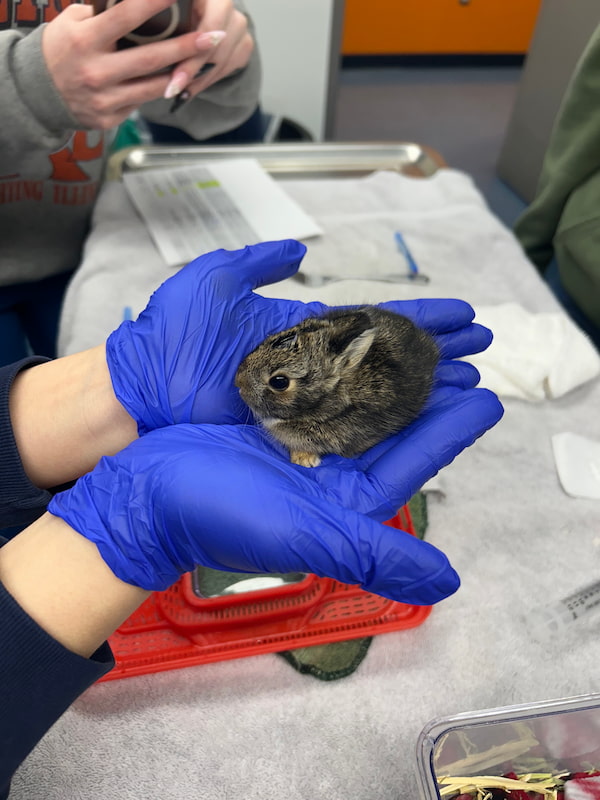
It can be quite alarming to find an abandoned baby bunny! If you come across an abandoned wild young cottontail, it is important to first assess them for any injuries. If the bunny otherwise appears healthy, the next course of action should be to locate the nest. Bunny nests can be difficult to find as they are usually not in plain sight. They can commonly be found at the bases of bushes, hidden in taller grass, or under decks or sheds, in depressions found in the ground.
Eastern Cottontails are a common bunny species in the Champaign-Urbana area. They do not burrow in the ground. Instead their nests will be on the ground level, lined with the mother’s fur and then covered with soft grasses. If the nest is successfully located, we advise you to gently place the found bunny in the nest and cover it with grass and leaves. To ensure that the mother is visiting the nest, a pattern of ribbon can be placed on top of the nest and flour can be used to create a trail around the nest. These aspects will be disturbed if the mother is actively visiting the nest. If you are unable to find a nest for the bunny, we advise you to give the WMC a call for further steps!
If you are concerned about your dogs finding the nest, you can cover it with an upside-down laundry basket, with a hole cut into the side large enough for the mother rabbit to access her nest. The laundry basket can have a heavy object, such as a brick, placed on top to prevent dogs from pushing it over.
Another important consideration is that eastern cottontail rabbits leave the nest and are independent at only 4 weeks of age! At that time, they are only about the size of a tennis ball! If you find a healthy young cottontail about that size with upright ears, it’s best to let them be. Many people mistake these young rabbits as orphaned, but they have actually already left their mother!
“I found a nest of baby birds, but I don’t see the parents, should I bring the nest in?”
It is very normal to not see the parents for a nest of baby birds! Birds, along with other wildlife species, are terrified of us and will likely not visit the nest with us nearby. It is best to watch the nest from far away, either from across the street, through a window, or from inside a car. If there are no signs of the parents after a few days, it would be appropriate to give the WMC a call. In situations where there has been a recent storm, bird nests can be knocked out of trees. After accessing inhabitants of the nest for any signs of injury, the nest can be placed securely into the nearest tree.
“I found a baby squirrel in my backyard, what should I do?”
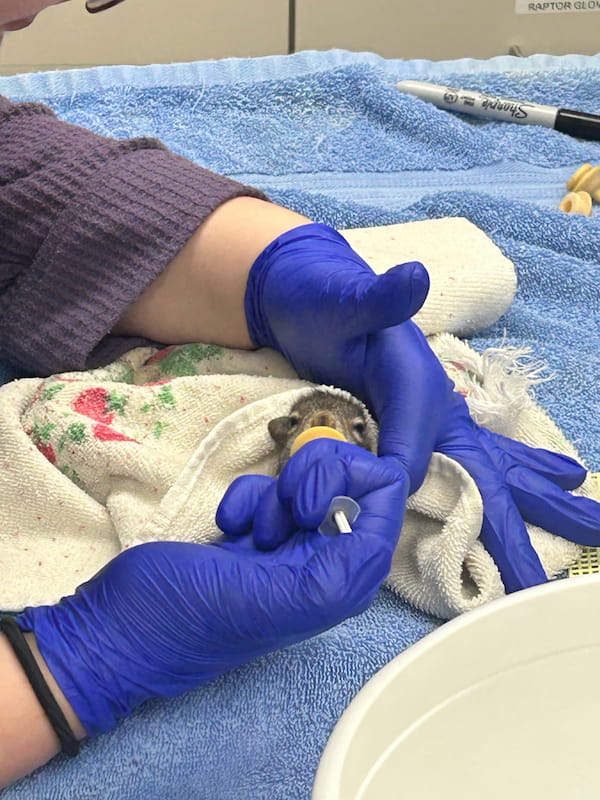
Baby squirrels typically wind up on the ground if they have fallen from their nest. If there are not any obvious signs of injury, it is completely okay to pick them up and place them back into their nest. In the event that you are unable to locate the nest or perhaps it is too high up, you can place them into a wicker basket close to where they were found. This gives the mom an opportunity to collect her baby and take it back to the nest. Even if the nest has been destroyed, it is common for the mother to have a back-up nest to move her babies to. If you don’t see her after a few hours or it is getting dark, you should bring the squirrel to the Wildlife Medical Clinic.
So you’ve determined it needs to come to the clinic, now what?
If you are planning to safely transport an orphaned or injured animal to the Wildlife Medical Clinic, it is important to understand the do’s and don’ts. Please do not feed them anything! Almost all species of wildlife can survive up to 24 hours without any food or water. Unfortunately, any attempts with feeding will likely result in serious issues for the animal. Inappropriate food items can cause harm to the animal’s digestive system and inappropriate feeding methods can pose a risk for the inhalation of food material.
The best thing that a finder can do is place the animal in a small box with air holes, keep them warm, provide them with a quiet, dark environment, and avoid handling the animal. Minimizing the amount of stress the animal is exposed to gives the animal the best chance of being able to make strides towards recovery.
For more information, follow the link below: Dr. Stephany Lewis, the current director of the Wildlife Medical Clinic, discussed with The News Gazette on when to bring wildlife here!
Written by: Rachel, Class of 2027

